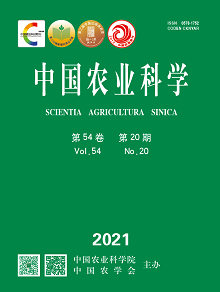【Objective】The material input of agriculture production is generally high for smallholder farmers, and the application rate of chemical fertilizers will change with the evolution of crop structure. Understanding the situation of nutrient input and economic benefits of smallholder to cereal crop, oil crop and cash crop could help guide scientific fertilization and improve economic benefits. 【Method】In 2018, a questionnaire survey was conducted on the production of major crops in Shaanxi Province. The cereal crop (wheat, maize, rice, millet, and potato), oil crop (canola and soybean), and cash crop (apple, tomato, and flue-cured tobacco) were considered as targeted crops, and a total of 1 709 questionnaires were obtained. Further, the fertilization status of smallholder, the potential of fertilizer reduction, and economic benefits according to yield level of different crops were evaluated. 【Result】For the production of wheat, maize, rice, millet, and potato, the mean yield was 4.6, 7.3, 8.3, 3.7, and 19.8 t·hm-2, respectively; the mean nitrogen (N) fertilizer rate was 177, 247, 186, 255, and 209 kg N·hm-2, respectively; the mean phosphate (P) fertilizer rate was 102, 103, 88, 142, and 125 kg P2O5·hm-2; mean potassium (K) fertilizer rate was 37, 47, 64, 53, and 110 kg K2O·hm-2, respectively. For canola and soybean production, the mean yield was 2.4 and 2.7 t·hm-2, N fertilizer rate was 156 and 99 kg N·hm-2, P fertilizer rate was 80 and 63 kg P2O5·hm-2, K fertilizer rate was 56 and 26 kg K2O·hm-2, respectively. For the production of apple, tomato, and tobacco, the mean yield was 23.8, 93.5, and 2.7 t·hm-2, respectively; N fertilizer rate was 731, 471, and 118 kg N·hm-2, P fertilizer rate was 482, 387, and 118 kg P2O5·hm-2, K fertilizer rate was 535, 447, and 132 kg K2O·hm-2, respectively. N and P fertilizers were usually over-applied, while both over-application and under-application of K fertilizer coexisted. The potential of N, P, K fertilizer reduction ranges from 28% to 60%, 52% to 66%, and 11% to 51% for cereal crop, 33%, 37% and 46% for canola, respectively. However, the application rate of P and K fertilizer needed to increase by 11% and 28% for soybean production, respectively. The potential of N, P, and K fertilizer reduction ranged from 41% to 67%, 65% to 70%, and 49% to 64% for apple and tomato production, respectively. For tobacco production, the application rate of P fertilizer could decrease by 53%, while the application rate of N fertilizer needed to increase by 22% and 11% for farmers with medium and high-yielding, respectively. The source of N was mainly compound fertilizers and urea, and the sources of P and K were mainly compound fertilizers. For the way of chemical fertilizer application, most of N fertilizer was applied as basal fertilizer, and a small part was supplemented by topdressing, while almost all P and K fertilizers were applied as basal fertilizer. For cereal crop, oil crop, and cash crop, the cost of fertilizer application accounted for 31%-52%, 57%-59% and 48%-65% of total input, respectively, and the net economic benefit ranged from 0.44×104to 1.63×104, 0.75×104to 0.84×104, and 4.19×104 to 15.05×104yuan/hm2, respectively. Because the net economic benefit of high-yielding in cash crop, e.g., apple and tomato, was higher than that of cereal crop and oil crop, smallholder farmers were more inclined to grow them. However, the substantial application of chemical fertilizer in cash crop production brought great environmental risks. 【Conclusion】The main target of fertilizer reduction and benefit improvement was smallholder with low and middle-yielding level. Compared with cereal crop and oil crop, the economic benefit of cash crop, especially for apple and tomato, was higher, while their potential of fertilizer reduction was also higher due to substantial application of chemical fertilizer. Notably, the result of the study also demonstrated that there was also insufficient application of fertilizer in crop production, e.g., soybean and tobacco. In conclusion, the fertilizer management of smallholder varied greatly. Improving the level of fertilizer management for smallholder was conducive to increasing both yield and economic benefits, and thus contributing to sustainable crop production.









